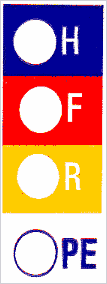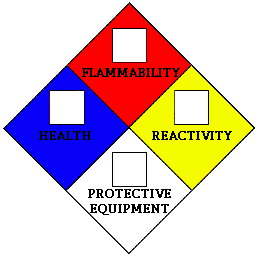
 | Our HMIS is based on the National Fire Protection Association-704 codes. Our HMIS labels should have four tags. The first three tags are integers from {low=0,1,2,3,4=high} indicating the hazard in three areas: H "health" (blue), F "flammability" (red), and R "reactivity" (yellow). The fourth code consists of letters for protective equipment (white): (FH "fume hood", C, D) |
 |
|
 |
|
 |
|
|  |